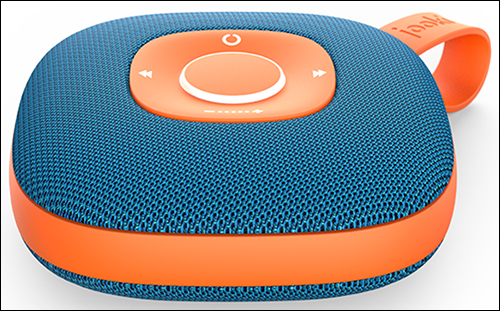Jan 30, 2018Belgium-based technology startup MuuseLabs is marketing a Near Field Communication (NFC)-enabled music-listening system that enables young children to access songs without becoming immersed in screen-based entertainment. The Jooki—which the company describes as a jukebox for kids—is an intelligent speaker device with a built-in 13.56 MHz NFC reader and Wi-Fi functionality. The device captures the unique ID numbers of NFC-tagged figurines placed on its surface, then plays mixes of music or stories on its speaker. An app enables parents of children using the toy to set up playlists and link them to specific characters.
The smart speaker for kids was brainstormed by Theo Marescaux, the company's co-founder and CEO, following a 2013 incident with his daughters, who were then three and four-and-a-half years old, respectively. They wanted to listen to music—a specific song which he accessed with his smartphone, and which they wanted to hear again and again.
Eventually, Marescaux says, "My phone disappeared and then the kids disappeared from me as well, behind the screen." Like many parents, he adds, he wanted to keep his young children from engaging with screen-based entertainment for as long as possible. However, accessing music was proving almost impossible without a phone, tablet or computer.
Marescaux was the product manager at technology company Barco, and has a background in microelectronics engineering. With some technical knowhow on his side, he decided to develop a technology-based solution for his parenting challenge.
"It was a weekend project for me," Marescaux says, during which he built a webcam into a box, with QR codes attached to wooden blocks and some basic software to enable QR links to specific songs. With QR codes, however, "It didn't work well enough," he states. "It was too hard to align the [QR codes on] the cubes with the optical scanner." In addition, the webcam would make the product too expensive for many families. He and his company's co-founders began exploring NFC technology.
The firm installed an off-the-shelf NFC reader chip and antenna into the speaker device, then applied NFC tags to character figurines that the company developed uniquely for the toy. Each tag's unique ID is stored in the speaker system. (Marescaux declines to name the NFC product manufacturers.)
When a parent or player launches the system, he or she first downloads the Jooki app onto his or her iOS or Android device, or simply uses a computer to open the Jooki Rocks website. The user can upload audio files of music or stories, or their own recordings of themselves reading stories. The parent selects a playlist selects the character he or she wants to link to that playlist.
A child can simply pick up a particular figure and place it on the speaker. The NFC reader will capture each tag ID and forward it, via a Wi-Fi connection, to the Jooki software on its hosted server, and the system will play the music associated with the figurine. In this way, although that child's parent uses an app to enable the system, the child can access music without picking up a phone or other screen-based device.
The system can also be used in streaming mode to simply play music via its Wi-Fi connection, from free services to which a child's parent has linked it. The company is now in the process of connecting the device with common music-streaming services, in order to enable users of those services to link playlists to the figurines without requiring that the playlists be established on the Jooki app. Because the speaker is Wi-Fi-based, Marescaux says, it can receive firmware upgrades, enabling the company to update and expand the toy's capabilities in the future.
Since the toy's release in November 2017, Marescaux says, consumers have been sharing videos of their children responding to the system, and he has been heartened by the way in which it has been used. "I have a blast every day watching them," he says. He has noticed, for instance, "When they put a character on Jooki, the first thing they do is start dancing." That's a large stretch from what happens when children access music on a phone, he explains, when they tend to sit and view a screen while the music is playing.
The toy is certified for children ages three and up, though Marescaux says teenagers and young adults have expressed an interest in using the device as well. "That's not the market we are actively pursuing," he says, though he acknowledges that he uses the toy himself to listen to music.
The system is priced at €199 ($244) for European customers, and will cost approximately US$199 during the coming months (currently, it is priced for U.S. customers at the conversion rate of about $240. with free shipping). It operates in two volume options: a softer, child-friendly mode and a "party" mode (which must be enabled by a parent using the app) that can be played at any volume. The child-friendly mode follows toy safety acoustic levels for kids starting at three year olds.
Users can order additional characters that come in a variety of colors, as well as tokens that can be decorated with stickers to make each unique. In that way, Marescaux says, players can create an unlimited number of playlists.



